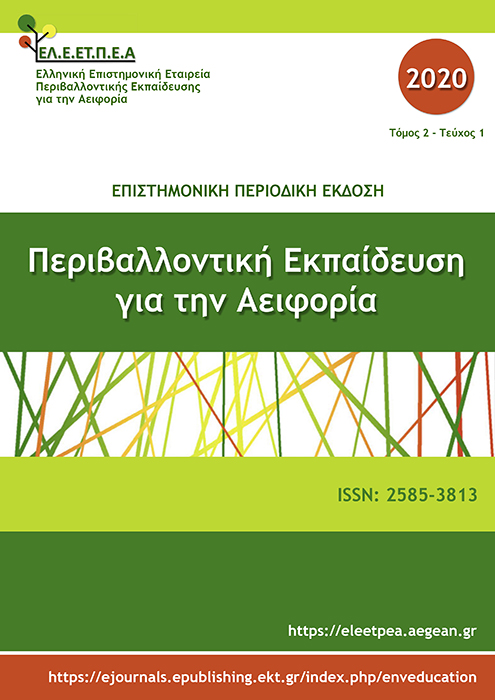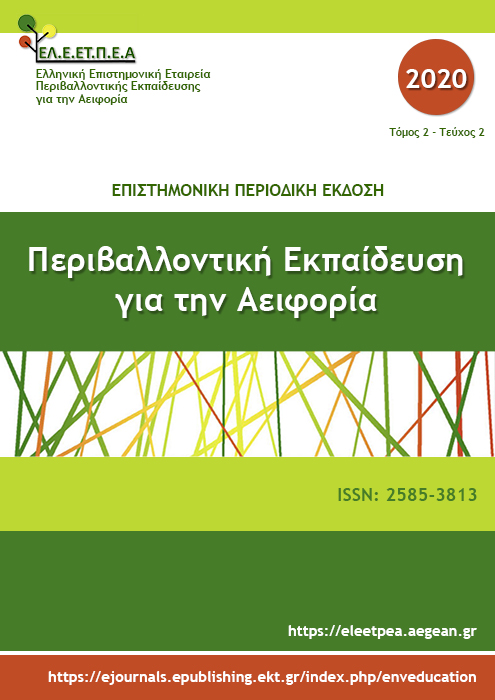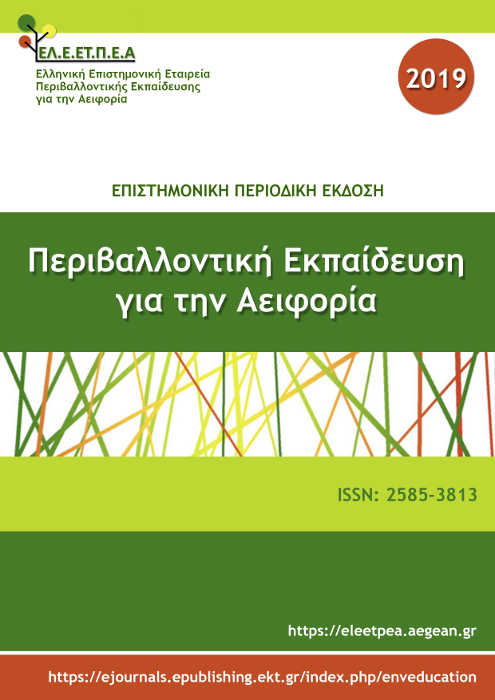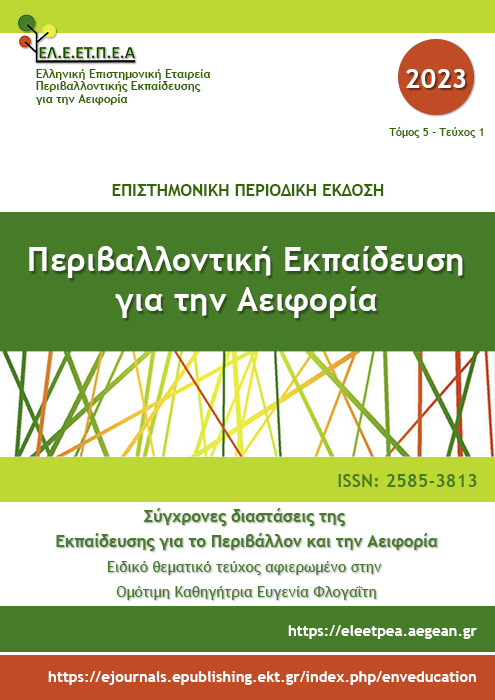Η αίσθηση του θάμβους και της κατάπληξης όταν τα μικρά παιδιά προσεγγίζουν τη φύση: ξαναδιαβάζοντας τη Rachel Carson
Abstract
Στην εργασία αυτή επιχειρείται η προσέγγιση του έργου της Rachel Carson για τη φύση και τα μικρά παιδιά υπό το πρίσμα των νέων εξελίξεων και ρευμάτων στον χώρο της παιδαγωγικής έρευνας και πράξης και της περιβαλλοντικής εκπαίδευσης. H αίσθηση του θάμβους και της κατάπληξης όταν τα μικρά παιδιά προσεγγίζουν τον φυσικό κόσμο, όπως αναδεικνύεται από την Carson, αναλύεται στη βάση μιας ολιστικής, ενσώματης και βασισμένης στις αισθήσεις παιδαγωγικής εμπειρίας που αποσκοπεί στη θεραπεία της αποξένωσης από τον μη ανθρώπινο κόσμο. Η αίσθηση του θάμβους και της κατάπληξης, επίκαιρη όσο ποτέ, επαναπροσεγγίζεται στην εργασία αυτή ως συναίσθημα, ως τρόπος μάθησης, ως διαδικασία επικοινωνίας και ως επιλογή συνύπαρξης και συμπόρευσης με τον μη ανθρώπινο κόσμο. Στο πλαίσιο της ενδυνάμωσης της σχέσης των παιδιών με τον φυσικό κόσμο, η αίσθηση του θάμβους και της κατάπληξης αποτελεί στοιχείο έμπνευσης για τη διαμόρφωση μίας παιδαγωγικής φιλοσοφίας που συνασπίζεται με την επίκαιρη, διεπιστημονική συζήτηση σχετικά με τον οραματισμό για την επανένωση νου και σώματος, πολιτισμού και φύσης.
Article Details
- Come citare
-
Τσεβρένη Ί. (2020). Η αίσθηση του θάμβους και της κατάπληξης όταν τα μικρά παιδιά προσεγγίζουν τη φύση: ξαναδιαβάζοντας τη Rachel Carson. Περιβαλλοντική Εκπαίδευση για την Αειφορία, 2(1), 42–52. https://doi.org/10.12681/ees.21734
- Sezione
- Articles

Questo lavoro è fornito con la licenza Creative Commons Attribuzione - Non commerciale - Condividi allo stesso modo 4.0 Internazionale.
Οι συγγραφείς διατηρούν τα πνευματικά δικαιώματα και παρέχουν στο περιοδικό το δικαίωμα της πρώτης δημοσίευσης μαζί με την αδειοδότηση της εργασίας με CC-BY-NC-SA, που επιτρέπει σε άλλους να μοιράζονται αυτή την εργασία με αναγνώριση του συγγραφικού δικαιώματος και την αρχική δημοσίευση σε αυτό το περιοδικό.





